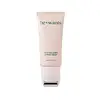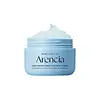What's inside
What's inside
 Key Ingredients
Key Ingredients

 Benefits
Benefits

 Concerns
Concerns

No concerns
 Ingredients Side-by-side
Ingredients Side-by-side

Water
Skin ConditioningCentella Asiatica Extract 10.7%
CleansingGlycerin
HumectantSimmondsia Chinensis Seed Oil
Emollient1,2-Hexanediol
Skin ConditioningNiacinamide
SmoothingSodium Polyacryloyldimethyl Taurate
Emulsion StabilisingCollagen Extract 1%
Skin ConditioningGanoderma Lucidum Stem Extract
Skin ConditioningSalvia Hispanica Seed Extract
EmollientGlycine Soja Seed Extract
Skin ConditioningTrifolium Pratense Extract
Skin ConditioningCitrus Aurantium Dulcis Peel Oil
MaskingCitrus Limon Peel Oil
MaskingCitrus Aurantium Bergamia Fruit Oil
MaskingSodium Hyaluronate
HumectantMentha Piperita Oil
MaskingZingiber Officinale Root Oil
MaskingLitsea Cubeba Fruit Oil
MaskingCymbopogon Nardus Oil
MaskingHydrogenated Lecithin
EmulsifyingIsostearyl Alcohol
EmollientButylene Glycol Cocoate
EmulsifyingAdenosine
Skin ConditioningDisodium EDTA
Ethylcellulose
Collagen
MoisturisingLeuconostoc/Radish Root Ferment Filtrate
AntimicrobialHydrolyzed Hyaluronic Acid
HumectantButylene Glycol
HumectantPropanediol
SolventMethylpropanediol
SolventAmmonium Acryloyldimethyltaurate/Vp Copolymer
Tetrahydropiperine
Skin ConditioningPhloretin
AntioxidantArginine
MaskingPotassium Cetyl Phosphate
EmulsifyingHydroxyacetophenone
AntioxidantEthylhexylglycerin
Skin ConditioningPentylene Glycol
Skin ConditioningLimonene
PerfumingLinalool
PerfumingWater, Centella Asiatica Extract 10.7%, Glycerin, Simmondsia Chinensis Seed Oil, 1,2-Hexanediol, Niacinamide, Sodium Polyacryloyldimethyl Taurate, Collagen Extract 1%, Ganoderma Lucidum Stem Extract, Salvia Hispanica Seed Extract, Glycine Soja Seed Extract, Trifolium Pratense Extract, Citrus Aurantium Dulcis Peel Oil, Citrus Limon Peel Oil, Citrus Aurantium Bergamia Fruit Oil, Sodium Hyaluronate, Mentha Piperita Oil, Zingiber Officinale Root Oil, Litsea Cubeba Fruit Oil, Cymbopogon Nardus Oil, Hydrogenated Lecithin, Isostearyl Alcohol, Butylene Glycol Cocoate, Adenosine, Disodium EDTA, Ethylcellulose, Collagen, Leuconostoc/Radish Root Ferment Filtrate, Hydrolyzed Hyaluronic Acid, Butylene Glycol, Propanediol, Methylpropanediol, Ammonium Acryloyldimethyltaurate/Vp Copolymer, Tetrahydropiperine, Phloretin, Arginine, Potassium Cetyl Phosphate, Hydroxyacetophenone, Ethylhexylglycerin, Pentylene Glycol, Limonene, Linalool
Water
Skin ConditioningGlycerin
HumectantC18-21 Alkane
Solvent1,2-Hexanediol
Skin ConditioningNiacinamide
SmoothingSimmondsia Chinensis Seed Oil
EmollientPolyglyceryl-3 Methylglucose Distearate
EmulsifyingButylene Glycol
HumectantPanthenol
Skin ConditioningSodium Carbomer
Emulsion StabilisingHydroxyacetophenone
AntioxidantEthylhexylglycerin
Skin ConditioningAdenosine
Skin ConditioningTrisodium Ethylenediamine Disuccinate
Hydrogenated Lecithin
EmulsifyingCeramide NP
Skin ConditioningMalachite Extract
AntioxidantArginine
MaskingPEG-10 Rapeseed Sterol
CleansingSodium Hyaluronate
HumectantAloe Barbadensis Leaf Extract
EmollientDipropylene Glycol
HumectantOryza Sativa Extract
AbsorbentGlyceryl Stearate
EmollientGlycereth-20
HumectantCamellia Sinensis Leaf Extract
AntimicrobialOryza Sativa Lees Extract
Skin ConditioningAnthemis Nobilis Flower Extract
MaskingTocopherol
AntioxidantHydrolyzed Hyaluronic Acid
HumectantLactobacillus/Rice Ferment
Skin ConditioningCaprylyl Glycol
EmollientCentella Asiatica Extract
CleansingSodium Dna
Skin ConditioningSodium Acetylated Hyaluronate
HumectantDisodium EDTA
Tripeptide-1
Skin ConditioningAcetyl Hexapeptide-8
HumectantCopper Tripeptide-1
Skin ConditioningPalmitoyl Pentapeptide-4
Skin ConditioningHexapeptide-9
Skin ConditioningBromelain
Skin ConditioningOryzanol
Skin ConditioningPapain
Skin ConditioningProtease
ExfoliatingLipase
Skin ConditioningKojic Dipalmitate
EmollientWater, Glycerin, C18-21 Alkane, 1,2-Hexanediol, Niacinamide, Simmondsia Chinensis Seed Oil, Polyglyceryl-3 Methylglucose Distearate, Butylene Glycol, Panthenol, Sodium Carbomer, Hydroxyacetophenone, Ethylhexylglycerin, Adenosine, Trisodium Ethylenediamine Disuccinate, Hydrogenated Lecithin, Ceramide NP, Malachite Extract, Arginine, PEG-10 Rapeseed Sterol, Sodium Hyaluronate, Aloe Barbadensis Leaf Extract, Dipropylene Glycol, Oryza Sativa Extract, Glyceryl Stearate, Glycereth-20, Camellia Sinensis Leaf Extract, Oryza Sativa Lees Extract, Anthemis Nobilis Flower Extract, Tocopherol, Hydrolyzed Hyaluronic Acid, Lactobacillus/Rice Ferment, Caprylyl Glycol, Centella Asiatica Extract, Sodium Dna, Sodium Acetylated Hyaluronate, Disodium EDTA, Tripeptide-1, Acetyl Hexapeptide-8, Copper Tripeptide-1, Palmitoyl Pentapeptide-4, Hexapeptide-9, Bromelain, Oryzanol, Papain, Protease, Lipase, Kojic Dipalmitate
 Reviews
Reviews

Ingredients Explained
These ingredients are found in both products.
Ingredients higher up in an ingredient list are typically present in a larger amount.
1,2-Hexanediol is a synthetic liquid and another multi-functional powerhouse.
It is a:
- Humectant, drawing moisture into the skin
- Emollient, helping to soften skin
- Solvent, dispersing and stabilizing formulas
- Preservative booster, enhancing the antimicrobial activity of other preservatives
Adenosine is in every living organism. It is one of four components in nucleic acids that helps store our DNA.
Adenosine has many benefits when used. These benefits include hydrating the skin, smoothing skin, and reducing wrinkles. Once applied, adenosine increases collagen production. It also helps with improving firmness and tissue repair.
Studies have found adenosine may also help with wound healing.
In skincare products, Adenosine is usually derived from yeast.
Learn more about AdenosineArginine is an amino acid that is important for human development. Your body uses is it to produce hair keratin and skin collagen.
As a cosmetic ingredient, Arginine has antioxidant properties and can also help repair damaged skin. This ingredient is derived either synthetically or from animals.
Arginine isn't fungal acne safe when used in the presence of other lipids (fats, fatty acids, oils, esters, etc). Oils and fats occur naturally within the skin, so take caution when using Arginine if you're prone to fungal acne.
Learn more about ArginineButylene Glycol (or BG) is used within cosmetic products for a few different reasons:
Overall, Butylene Glycol is a safe and well-rounded ingredient that works well with other ingredients.
Though this ingredient works well with most skin types, some people with sensitive skin may experience a reaction such as allergic rashes, closed comedones, or itchiness.
Learn more about Butylene GlycolCentella Asiatica Extract (Centella) is derived from an herb native to Southeast Asia. It is famous for its anti-inflammatory and soothing properties.
Centella is rich in antioxidants and amino acids, such as Madecassic Acid and Asiaticoside.
Studies show the compounds in centella help with:
The combination of all these properties makes centella effective at soothing, hydrating, and protecting the skin.
Other great components of centella include Vitamin A, vitamin C, several B vitamins, and Asiatic Acid.
Fun fact: Centella has been used as a medicine and in food for many centuries. As a medicine, it is used to treat burns, scratches, and wounds.
Learn more about Centella Asiatica ExtractDisodium EDTA plays a role in making products more stable by aiding other preservatives.
It is a chelating agent, meaning it neutralizes metal ions that may be found in a product.
Disodium EDTA is a salt of edetic acid and is found to be safe in cosmetic ingredients.
Learn more about Disodium EDTAEthylhexylglycerin (we can't pronounce this either) is commonly used as a preservative and skin softener. It is derived from glyceryl.
You might see Ethylhexylglycerin often paired with other preservatives such as phenoxyethanol. Ethylhexylglycerin has been found to increase the effectiveness of these other preservatives.
Glycerin is already naturally found in your skin. It helps moisturize and protect your skin.
A study from 2016 found glycerin to be more effective as a humectant than AHAs and hyaluronic acid.
As a humectant, it helps the skin stay hydrated by pulling moisture to your skin. The low molecular weight of glycerin allows it to pull moisture into the deeper layers of your skin.
Hydrated skin improves your skin barrier; Your skin barrier helps protect against irritants and bacteria.
Glycerin has also been found to have antimicrobial and antiviral properties. Due to these properties, glycerin is often used in wound and burn treatments.
In cosmetics, glycerin is usually derived from plants such as soybean or palm. However, it can also be sourced from animals, such as tallow or animal fat.
This ingredient is organic, colorless, odorless, and non-toxic.
Glycerin is the name for this ingredient in American English. British English uses Glycerol/Glycerine.
Learn more about GlycerinHydrogenated Lecithin is created from the hydrogenation of lecithin (a group of phospholipids). Hydrogenation is a chemical reaction between hydrogen and another element.
This ingredient is an emollient and emulsifier. As an emollient, it helps soften skin by trapping moisture within. As an emulsifier, it prevents oil and water ingredients from separating.
Hydrolyzed Hyaluronic Acid is a form of hyaluronic acid. It is created by the hydrolysis of hyaluronic acid with a high molecular weight. Once created, Hydrolyzed Hyaluronic Acid has a low molecular weight.
Low molecular weight HA has been shown to hydrate and increase elasticity of the skin. Increasing elasticity is also associated with reduction of wrinkle depth.
One study found topical low molecular weight hyaluronic acid may be considered for the treatment of rosacea in the adult population. However, we always recommend speaking with a professional about your skin concerns.
Hyaluronic acids are a humectant. This means they draw moisture from the air. Hyaluronic acids help moisturize, soothe, and protect the skin.
Read more about other common forms of hyaluronic acid:
Learn more about Hydrolyzed Hyaluronic AcidHydroxyacetophenone is antioxidant with skin conditioning and soothing properties. It also boosts the efficiency of preservatives.
This ingredient is not irritating or sensitizing.
Niacinamide is a multitasking form of vitamin B3 that strengthens the skin barrier, reduces pores and dark spots, regulates oil, and improves signs of aging.
And the best part? It's gentle and well-tolerated by most skin types, including sensitive and reactive skin.
You might have heard of "niacin flush", or the reddening of skin that causes itchiness. Niacinamide has not been found to cause this.
In very rare cases, some individuals may not be able to tolerate niacinamide at all or experience an allergic reaction to it.
If you are experiencing flaking, irritation, and dryness with this ingredient, be sure to double check all your products as this ingredient can be found in all categories of skincare.
When incorporating niacinamide into your routine, look out for concentration amounts. Typically, 5% niacinamide provides benefits such as fading dark spots. However, if you have sensitive skin, it is better to begin with a smaller concentration.
When you apply niacinamide to your skin, your body converts it into nicotinamide adenine dinucleotide (NAD). NAD is an essential coenzyme that is already found in your cells as "fuel" and powers countless biological processes.
In your skin, NAD helps repair cell damage, produce new healthy cells, support collagen production, strengthen the skin barrier, and fight environmental stressors (like UV and pollution).
Our natural NAD levels start to decline with age, leading to slower skin repair, visible aging, and a weaker skin barrier. By providing your skin niacinamide, you're recharging your skin's NAD levels. This leads to stronger, healthier, and younger looking skin.
Another name for vitamin B3 is nicotinamide. This vitamin is water-soluble and our bodies don't store it. We obtain Vitamin B3 from either food or skincare. Meat, fish, wheat, yeast, and leafy greens contain vitamin B3.
The type of niacinamide used in skincare is synthetically created.
Learn more about NiacinamideThis oil comes from the seeds of the desert shrub called Jojoba. It is more commonly known as jojoba oil, a non-comedogenic oil.
Jojoba oil does not contain fragrance and has many fatty-acids, making it a great soothing ingredient.
It also contains Vitamin E, a great moisturizing ingredient. Vitamin E is also an antioxidant and protects your skin against oxidative damage.
This ingredient humectant properties, meaning it helps draw moisture from the air. This helps keep your skin hydrated.
While jojoba has antibacterial properties, it is only able to kill some strains of bacteria.
Studies also show it helps in wound healing. In fact, Indigenous cultures have used jojoba as a moisturizer and to help treat burns for centuries.
Fun fact: Jojoba oil similar to natural human skin sebum, so it has a great effect on dry skin. It is also promising with helping to regulate sebum production.
Due to its fatty acid content, Jojoba oil may not be fungal acne safe. We recommend speaking with a professional if you have any concerns.
Learn more about Simmondsia Chinensis Seed OilSodium Hyaluronate is hyaluronic acid's salt form. It is commonly derived from the sodium salt of hyaluronic acid.
Like hyaluronic acid, it is great at holding water and acts as a humectant. This makes it a great skin hydrating ingredient.
Sodium Hyaluronate is naturally occurring in our bodies and is mostly found in eye fluid and joints.
These are some other common types of Hyaluronic Acid:
Learn more about Sodium HyaluronateWater. It's the most common cosmetic ingredient of all. You'll usually see it at the top of ingredient lists, meaning that it makes up the largest part of the product.
So why is it so popular? Water most often acts as a solvent - this means that it helps dissolve other ingredients into the formulation.
You'll also recognize water as that liquid we all need to stay alive. If you see this, drink a glass of water. Stay hydrated!
Learn more about Water